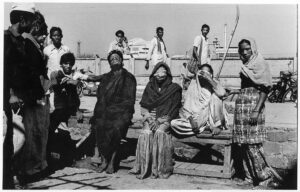
A paper recently published in ‘Current Science’, by two ex-members of the ‘Students for Bhopal’ group, outlines unmet eye-care needs among survivors of the Bhopal Gas Disaster.
“A more regular eye-care unit needs to be set up… in order to reduce preventable blindness and provide symptomatic treatment. Better government interventions and better public health policies need to be put in place for the survivors of the disaster.”
Prem Nandhini Satgunam and Leonid Chindelevitch, at that time members of the MIT (Massachusetts Institute of Technology) chapter of Students for Bhopal, travelled to Bhopal in 2012, after they had completed their respective studies, to conduct a non-invasive vision screening for disaster survivors at the Sambhavna Clnic.
The paper concludes that: “Some of these needs are similar to those elsewhere in India (e.g. uncorrected refractive error and cataract), but there are also needs unique to this cohort (e.g. dry eye like symptoms) that have persisted long after the disaster. A more regular eye care unit needs to be set up in the clinic serving this cohort in order to reduce preventable blindness and provide symptomatic treatment. Careful studies are also required to investigate the etiology of the anterior segment symptoms in this cohort. Better government intervention and better public health policies need to be put in place for the survivors of the disaster. In addition to the eye conditions, the current status of other health problems in this cohort should also be investigated to ascertain the long-term effects of gas exposure.”
Satgunam is currently affiliated to the L.V. Prasad Eye Institute, Hyderabad, while Chindelevitch is with Simon Fraser University, School of Computing Science, British Columbia, Canada.
Read the paper here, from: Current Science, Volume 112, No10, 25 May 2017: CLICK


